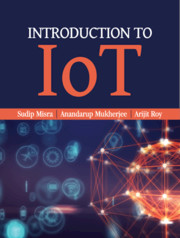13 - Vehicular IoT
Published online by Cambridge University Press: 09 January 2021
Summary
Learning Outcomes
After reading this chapter, the reader will be able to:
Relate to the applicability of IoT in real scenarios
List the salient features of vehicular IoT
Understand the requirements, challenges, and advantages of implementing IoT in vehicles
Relate to the appropriate use of various IoT technologies through a real-life case on vehicular IoT
Introduction
In this chapter, we discuss the application of IoT in connected vehicular systems. The use of connected vehicles is increasing rapidly across the globe. Consequently, the number of on-road accidents and mismanagement of traffic is also increasing. The increasing number of vehicles gives rise to the problem of parking. However, the evolution of IoT helps to form a connected vehicular environment to manage the transportation systems efficiently. Vehicular IoT systems have penetrated different aspects of the transportation ecosystem, including on-road to off-road traffic management, driver safety for heavy to small vehicles, and security in public transportation. In a connected vehicular environment, vehicles are capable of communicating and sharing their information. Moreover, IoT enables a vehicle to sense its internal and external environments to make certain autonomous decisions. With the help of modern-day IoT infrastructure, a vehicle owner residing in Earth's northern hemisphere can very easily track his vehicular asset remotely, even if it is in the southern hemisphere. In this chapter, we discuss the importance and applications of IoT in the vehicular systems. Figure 13.1 represents a simple architecture of a vehicular IoT system. The architecture of the vehicular IoT is divided into three sublayers: device, fog, and cloud.
Device: The device layer is the bottom-most layer, which consists of the basic infrastructure of the scenario of the connected vehicle. This layer includes the vehicles and road side units (RSU). These vehicles contain certain sensors which gather the internal information of the vehicles. On the other hand, the RSU works as a local centralized unit that manages the data from the vehicles.
Fog: In vehicular IoT systems, fast decision making is pertinent to avoid accidents and traffic mismanagement. In such situations, fog computing plays a crucial role by providing decisions in real-time, much near to the devices. Consequently, the fog layer helps to minimize data transmission time in a vehicular IoT system.
- Type
- Chapter
- Information
- Introduction to IoT , pp. 283 - 292Publisher: Cambridge University PressPrint publication year: 2021
- 1
- Cited by

